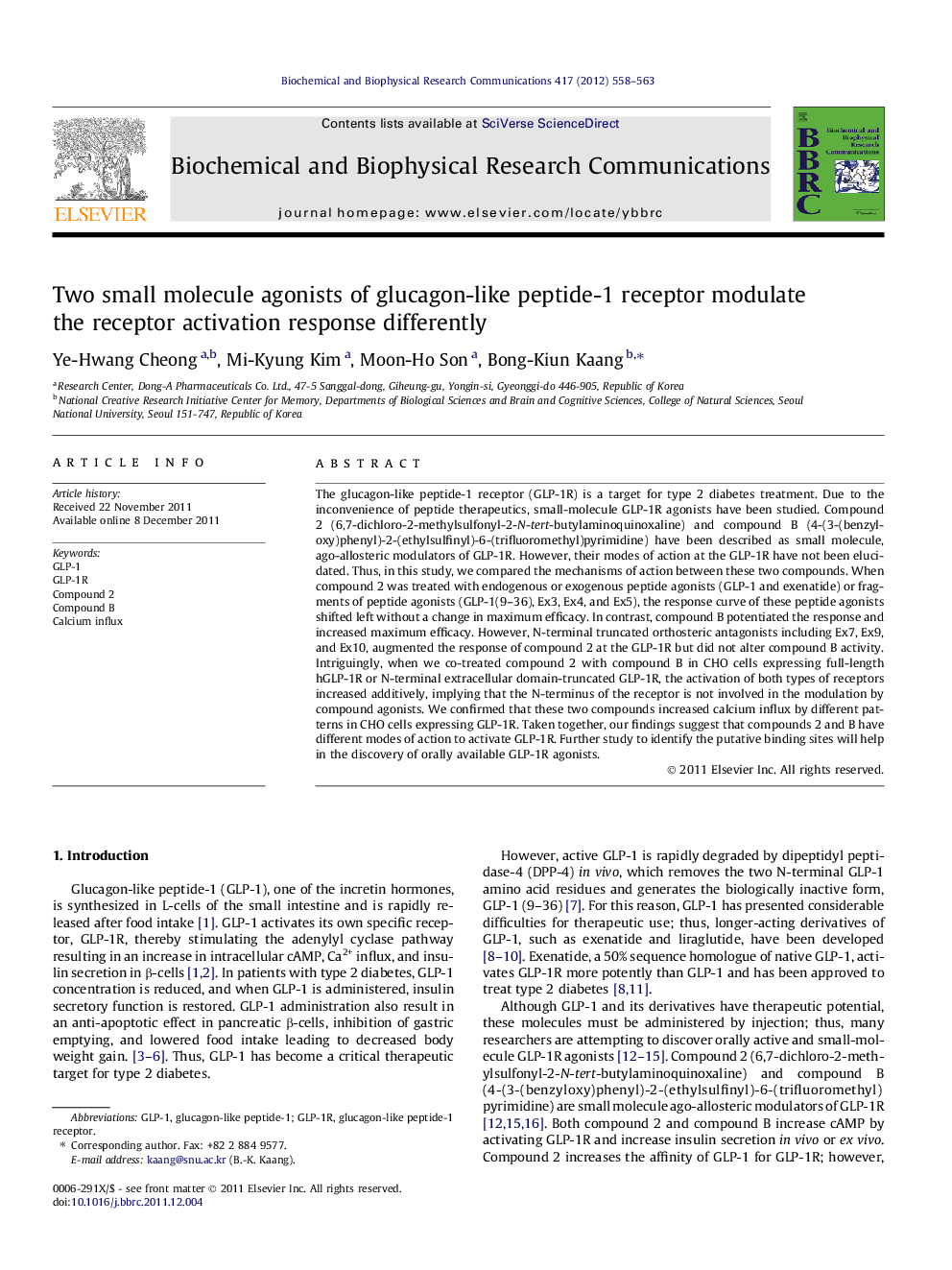| کد مقاله | کد نشریه | سال انتشار | مقاله انگلیسی | نسخه تمام متن |
|---|---|---|---|---|
| 1930161 | 1050489 | 2012 | 6 صفحه PDF | دانلود رایگان |

The glucagon-like peptide-1 receptor (GLP-1R) is a target for type 2 diabetes treatment. Due to the inconvenience of peptide therapeutics, small-molecule GLP-1R agonists have been studied. Compound 2 (6,7-dichloro-2-methylsulfonyl-2-N-tert-butylaminoquinoxaline) and compound B (4-(3-(benzyloxy)phenyl)-2-(ethylsulfinyl)-6-(trifluoromethyl)pyrimidine) have been described as small molecule, ago-allosteric modulators of GLP-1R. However, their modes of action at the GLP-1R have not been elucidated. Thus, in this study, we compared the mechanisms of action between these two compounds. When compound 2 was treated with endogenous or exogenous peptide agonists (GLP-1 and exenatide) or fragments of peptide agonists (GLP-1(9–36), Ex3, Ex4, and Ex5), the response curve of these peptide agonists shifted left without a change in maximum efficacy. In contrast, compound B potentiated the response and increased maximum efficacy. However, N-terminal truncated orthosteric antagonists including Ex7, Ex9, and Ex10, augmented the response of compound 2 at the GLP-1R but did not alter compound B activity. Intriguingly, when we co-treated compound 2 with compound B in CHO cells expressing full-length hGLP-1R or N-terminal extracellular domain-truncated GLP-1R, the activation of both types of receptors increased additively, implying that the N-terminus of the receptor is not involved in the modulation by compound agonists. We confirmed that these two compounds increased calcium influx by different patterns in CHO cells expressing GLP-1R. Taken together, our findings suggest that compounds 2 and B have different modes of action to activate GLP-1R. Further study to identify the putative binding sites will help in the discovery of orally available GLP-1R agonists.
► Compound 2 and compound B are small molecule GLP-1 receptor (GLP1R) agonists.
► In the presence of GLP-1, these compounds show different GLP1R activation response.
► The dissimilar responses are also showed in the presence of orthosteric antagonists.
► Two compounds increase calcium influx by different pattern.
Journal: Biochemical and Biophysical Research Communications - Volume 417, Issue 1, 6 January 2012, Pages 558–563